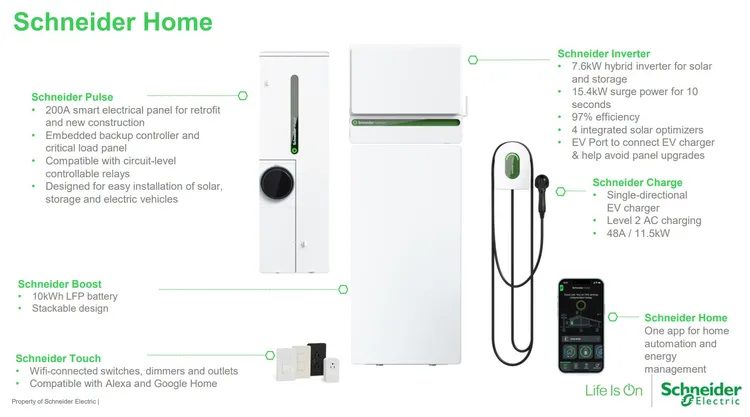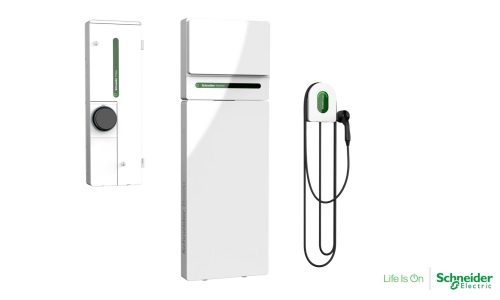The air has been abuzz with news coming out of CES 2023, but it seems Schneider Electric, true to its name, has sent a shockwave through industry respondents with its recent announcement. An established name in energy management and automation, the company states that with the launch of Schneider Home, the promise of a truly smart energy solution will finally arrive for homeowners and pros alike.
The announcement names a slew of smart energy products aimed at helping homeowners keep their houses powered during outage, save on their energy bills, manage solar and charge electric vehicles through a simple, singular interface. To name the ones that got announced, there is:
- Schneider Pulse: A 200A smart electrical panel for retrofit and new construction designed for easy installation and integration of solar and electric vehicle charging.
- Schneider Boost: A stackable 10kWh LFP battery that can be wall mounted and fit snugly with other Schneider Home components.
- The Schneider Inverter: A 7.6 kW inverter for whole-house solar and EV charging.
- Schneider Charge: An 11.5 kW level 2 EV charger that can leverage onsite solar and storage to boost charge times while lowering costs.
- And Schneider Home: The platform that makes all of this controllable through a single app.
Schneider will also be pairing these systems with an array of connected electric sockets and light switches which will be able to communicate back to the entire system. This means that by using a smart plug, say, users will get a read on how much energy devices connected to those outlets are consuming.
Schneider Home Promises Far More Intelligent Home Energy
In addition to all the insight and monitoring capabilities, Schenider also states that the system can offer suggestions based on current energy situations. If the power is out, the app might suggest shutting off the AC or other high-drain sources to save on battery energy. It can also recommend which devices should be kept running during outages as well.

The company also notes that by using the main panel and inverter, homeowners will be able to install and use EV chargers, even if their electrical service line would normally be unable to accommodate. It also allows homeowners to save by enrolling in utility programs and qualify for tax incentives.
Schneider also states that not all components of the smart home system are necessary for the system itself to function. For example, most solar, batteries and EV chargers will be compatible with the Schneider Home solution, according to the company. Ultimately, the system itself is designed to be modular and can be installed as barebones as needed and upgraded over time.
Professional Energy Management Systems Continue to Grow
How this will shake up energy management is yet to be seen, obviously, but it will be interesting to see how Schneider’s offering might compete with others in the space. While many smart home manufacturers have been dabbling in individual products related to smart energy, only a select few, like Savant, have offered any level of a comprehensive system up until this point. Funnily enough, both companies spoke on a panel at CEDIA Expo 2022 on this exact same topic.
Based off of a recent survey, 83% of Americans cite energy efficiency and sustainability as the most important factors in home improvement, and, according to Schneider Electric 90% of homes in the US lack any level of a solution to achieve those goals.
“There’s never been a greater need for transformation or a greater opportunity for positive impact and innovation is how we empower consumers on their path to net zero,” stated Nadege Petit, Executive Vice President, Innovation at Schneider Electric in a press release on the announcement.
“Homeowners are now able to produce their own energy and seamlessly switch between power sources to optimize cost. Schneider Home provides them the tools for a self-sufficient home, reducing their environmental impact, while saving them money on their energy bills.”
Initial installations of the system are expected to take place this summer, with greater availability ramping up later into 2023.
This article has been updated as of 01/17/23 to ensure the validity of information provided.







